恭喜发财 (Gōngxǐ fācái), everyone! As promised, here is part two of my Chinese New Year special here on my blog. In my previous list, My Top 14 Fictional Horses, I discussed 14 fictional equines that I feel are some of the best that fiction has to offer. As that list was to celebrate the end of 2014 and the Year of the Horse, it's time to move to the present and now: 2015, and the Year of the Goat/Sheep/Ram.
In the legend of the Great Race that determined the order of the Chinese Zodiac, the Goat is the 8th animal, coming after the horse. The goat, rooster, and monkey actually worked together to traverse the obstacle that was the river. The rooster found a raft, and invited the goat and monkey to ride on it. Likewise, the latter two animals did their part by clearing away weeds and pulling the raft ashore. The Emperor, pleased with their teamwork, awarded them the 8th, 9th, and 10th spots respectively. The goat is also present in other various mythological tales around the world. For example, Tanngrisnir and Tanngnjóstr are two goats in Norse mythology that pull the chariot of Thor. In Greek mythology, there is the god Pan, who has the horns and lower body of a goat. Goats are also mentioned in the Bible:
When the Son of Man comes in his glory, and all the angels with him, he will sit on his glorious throne. All the nations will be gathered before him, and he will separate the people one from another as a shepherd separates the sheep from the goats. He will put the sheep on his right and the goats on his left.
“Then the King will say to those on his right, ‘Come, you who are blessed by my Father; take your inheritance, the kingdom prepared for you since the creation of the world. For
I was hungry and you gave me something to eat, I was thirsty and you
gave me something to drink, I was a stranger and you invited me in, I needed clothes and you clothed me, I was sick and you looked after me, I was in prison and you came to visit me.’
“Then the righteous will answer him, ‘Lord, when did we see you hungry and feed you, or thirsty and give you something to drink? When did we see you a stranger and invite you in, or needing clothes and clothe you? When did we see you sick or in prison and go to visit you?’
“The
King will reply, ‘Truly I tell you, whatever you did for one of the
least of these brothers and sisters of mine, you did for me.’
“Then he will say to those on his left, ‘Depart from me, you who are cursed, into the eternal fire prepared for the devil and his angels. For I was hungry and you gave me nothing to eat, I was thirsty and you gave me nothing to drink, I
was a stranger and you did not invite me in, I needed clothes and you
did not clothe me, I was sick and in prison and you did not look after
me.’
“They
also will answer, ‘Lord, when did we see you hungry or thirsty or a
stranger or needing clothes or sick or in prison, and did not help you?’
“He will reply, ‘Truly I tell you, whatever you did not do for one of the least of these, you did not do for me.’
“Then they will go away to eternal punishment, but the righteous to eternal life.”
Matthew 25:31-46, New International Version
"But wait!" you may say. "Isn't it also called the Year of the Sheep or Year of the Ram?". Yes, and here's why.
In Mandarin Chinese, this is the character for yáng. The problem we have here is that Chinese-English dictionaries translate the character as sheep, while in actual Mandarin Chinese, the character is more associated with goat. To be specific, sheep in Mandarin Chinese is (绵羊) miányáng, while goat is (山羊) shānyáng. The confusion doesn't end there, because languages that share the same characters also have their discrepancies; Vietnamese, like Mandarin Chinese, associates this character with goat, while Japanese associates this character with sheep. As a result, people rotate between calling it the Year of the Sheep or Year of the Goat (Or Ram, which is technically a male sheep anyway). Both are right in the grand scheme, and it just depends on culture.
But anyway, you're not here to read up the intricacies and confusion of foreign languages. You're here to see my opinion on some of fiction's best goats/sheep. Like the last list, these top 15 aren't in any particular order I'm setting myself some rules.
1. No hybrid fantasy creatures like the satyr.
2. Goats/Sheep/Rams that existed in real life do not count, unless they are portrayed in a notable piece of fiction.
3. In cases of properties or franchises that have more than one goat or sheep, only one will be chosen.
4. The Goat/Sheep/Ram has to be alive or have some form of sentience and sapience.
Oh and also, because the list covers two different animals, there's a chance that I won't be able to properly give both animals equal representation. So, if any of you happen to be sheep or goat enthusiasts, I apologize. Frankly putting this list is even harder than the previous one, because in my opinion, the sheep and/or goat doesn't exactly lend itself to a lot of fiction. And just like last time, I'll be discussing various stories of certain entries, so...
So let's get started. This is my Top 15 Fictional Goats/Sheep/Rams.
----------------------------------------------
#15-Gharbad the Weak (Diablo series)
I just mentioned that satyrs are not included, which is why this guy is being mentioned first. On the other hand, it's not like they're specifically called "satyrs" in the game, anyway...
Diablo was created by Blizzard Entertainment in 1996/1997 for PC. It's an action-adventure RPG game where you click your way through various dungeons, battle monsters, level up your character, complete quests, etc. It was released to critical acclaim and had various expansions and sequels over the years, with the most recent entry being Diablo III and its expansion, Reaper of Souls. One of the classes of enemies encountered in the series are the Khazra (Goatmen), mutated humans that are given the image and visage of goats or satyrs. The type and strength of the Khazra depends on which clan they are from, and as Diablo's lore and story expanded, there were many types of Khazra. Khazra typically wield melee weapons like Morning Stars, spears, scythes and etc. There are many special, named Khazra encountered throughout the games like Blighthorn Steelmace, Lorzak the Powerful, and Skehlinrath.
But the most famous of all these Kahzra originates from the very first game, encountered in the fourth level of the cursed chapel: Gharbad the Weak.
As the dialogue suggests, Gharbad is quite a coward. If you leave the area and talk with him, he'll keep insisting that you leave him alone to make his item for you. Eventually you find that the item he made was too powerful, and that you need to kill him to take it. Fortunately, Gharbad is indeed "the weak", and does very little damage and is easy to kill. To end the mostly pointless quest, your character upon killing Gharbad says that he/she's not impressed.
It's because of the randomness of this quest, the character, and his very basic goat-ish speech patterns that made Gharbad such a well remembered extra character in Diablo. The guy was so much of a weenie and so memorable, that they brought him back in Diablo III in the "Revenge of Gharbad" sidequest, reborn as Gharbad the Strong. Unfortunately, his new-found strength came at a price; he's decidedly less funny now.
Gharbad the Weak. We're not impressed by your strength, but we're impressed with your random insertion into the game.
------------------------------------------
#14-The Three Billy Goats Gruff
Again, being mentioned early because this entry discusses three goats instead of one, but really all three need to be clumped together because of their importance in the story.
On the off chance you have never read this particular fairy tale, The Three Billy Goats Gruff is a Norwegian Fairy Tale that was first published in a book in the early 1840's. The plot revolved around three separate goats who aimed to go to a meadow where there were tons of grass so they could eat and get fat. Unfortunately they needed to traverse a bridge, which was guarded by a nasty troll.
Last time in my previous list, I talked about the My Little Pony franchise, a toyline started in the 1980's. Well, it's time to look at another one.
1. No hybrid fantasy creatures like the satyr.
2. Goats/Sheep/Rams that existed in real life do not count, unless they are portrayed in a notable piece of fiction.
3. In cases of properties or franchises that have more than one goat or sheep, only one will be chosen.
4. The Goat/Sheep/Ram has to be alive or have some form of sentience and sapience.
Oh and also, because the list covers two different animals, there's a chance that I won't be able to properly give both animals equal representation. So, if any of you happen to be sheep or goat enthusiasts, I apologize. Frankly putting this list is even harder than the previous one, because in my opinion, the sheep and/or goat doesn't exactly lend itself to a lot of fiction. And just like last time, I'll be discussing various stories of certain entries, so...
So let's get started. This is my Top 15 Fictional Goats/Sheep/Rams.
----------------------------------------------
#15-Gharbad the Weak (Diablo series)
I just mentioned that satyrs are not included, which is why this guy is being mentioned first. On the other hand, it's not like they're specifically called "satyrs" in the game, anyway...
Diablo was created by Blizzard Entertainment in 1996/1997 for PC. It's an action-adventure RPG game where you click your way through various dungeons, battle monsters, level up your character, complete quests, etc. It was released to critical acclaim and had various expansions and sequels over the years, with the most recent entry being Diablo III and its expansion, Reaper of Souls. One of the classes of enemies encountered in the series are the Khazra (Goatmen), mutated humans that are given the image and visage of goats or satyrs. The type and strength of the Khazra depends on which clan they are from, and as Diablo's lore and story expanded, there were many types of Khazra. Khazra typically wield melee weapons like Morning Stars, spears, scythes and etc. There are many special, named Khazra encountered throughout the games like Blighthorn Steelmace, Lorzak the Powerful, and Skehlinrath.
But the most famous of all these Kahzra originates from the very first game, encountered in the fourth level of the cursed chapel: Gharbad the Weak.
As the dialogue suggests, Gharbad is quite a coward. If you leave the area and talk with him, he'll keep insisting that you leave him alone to make his item for you. Eventually you find that the item he made was too powerful, and that you need to kill him to take it. Fortunately, Gharbad is indeed "the weak", and does very little damage and is easy to kill. To end the mostly pointless quest, your character upon killing Gharbad says that he/she's not impressed.
It's because of the randomness of this quest, the character, and his very basic goat-ish speech patterns that made Gharbad such a well remembered extra character in Diablo. The guy was so much of a weenie and so memorable, that they brought him back in Diablo III in the "Revenge of Gharbad" sidequest, reborn as Gharbad the Strong. Unfortunately, his new-found strength came at a price; he's decidedly less funny now.
Gharbad the Weak. We're not impressed by your strength, but we're impressed with your random insertion into the game.
------------------------------------------
#14-The Three Billy Goats Gruff
Again, being mentioned early because this entry discusses three goats instead of one, but really all three need to be clumped together because of their importance in the story.
On the off chance you have never read this particular fairy tale, The Three Billy Goats Gruff is a Norwegian Fairy Tale that was first published in a book in the early 1840's. The plot revolved around three separate goats who aimed to go to a meadow where there were tons of grass so they could eat and get fat. Unfortunately they needed to traverse a bridge, which was guarded by a nasty troll.
No, not that kind of troll. Though they're not too far off from each other...
At any rate, the story goes like this. The first goat is the smallest and wants to cross the bridge first. When the troll approaches the small goat with the intention of eating him, the first goat convinces the troll to let him pass and wait for the second goat because the second goat is bigger and will be a more satisfying meal. The greedy troll obliges, and the process repeats when the second goat arrives. The second goat too manages to convince the troll to wait for the third because, to the troll's mind: biggest goat=biggest meal.
As you might have guessed, the third goat arrives and is so big that he knocks the troll off the bridge. From then on, the three goats could pass the bridge and eat as much grass as they want, the troll doesn't bother anyone anymore, and they all live happily ever after. The moral of the story is to not be greedy, because the troll easily could've gotten his meal if he just ate the first and/or second goat. The troll thought with his stomach and not with his brain and as a result, he got completely pwned by his prey. The editor of the TV Tropes article on the story also presents other morals, such as "The elder sibling should protect the younger ones" or "If you're not strong, be clever".
The story would be interpreted and homaged in various ways, such as The Troll Hunter, where the main character lures out a troll with three increasingly large goats. Or Discworld, where goats and trolls have a bitter rivalry. Probably the most recent example is in the 2011 video game Elder Scrolls V: Skyrim:
The Three Billy Goats Gruff. If only they can take care of Internet Trolls too...
-----------------------------------------------
#13-Gentle Heart Lamb (Care Bears)Last time in my previous list, I talked about the My Little Pony franchise, a toyline started in the 1980's. Well, it's time to look at another one.
The Care Bears originally started as greeting cards characters in 1981 under the American Greetings Corporation. In 1983, Kenner Products for whatever reason decided to turn them into a toyline, and they were a massive hit, with their colorful looks, plushness, and of course, them being teddy bears. The Care Bears franchise really took off during that period and spawned an animated series, three theatrical released films, and plenty of direct-to-video specials. During the 90's they were dormant, but came back in a fashion in the 2000's and enjoy small popularity in the 2010's.
It was during the first theatrical movie, The Care Bears Movie in 1985, where our #13 entry on this list was introduced. Some exec at the time probably thought that the Care Bears were selling like hotcakes, and decided to have more than just bears in the lineup.
Enter the Care Bear Cousins, creatures similar to the Care Bears except, well, they're not bears. In the movie, the characters meet the Care Bears after an attack by the villainous Spirit forces the Care Bears to be separated and end up in the Forest of Feelings. After rescuing them, the cousins join the bears to thwart the Spirit on Earth, and move to Care-a-Lot, the bears's home in the sky. From then on the cousins would make appearances in the remaining movies and the animated show during the 80's.
One of these cousins is Gentle Heart Lamb. Yeah, the Care Bears have very specific names, usually involving an adjective, and a heart. The cousins in this case ALL have heart in their name. As the name suggests, Gentle Heart Lamb is very gentle and kind-hearted. She may however be a little too gentle, because she is timid and easily gets scared of things. Unlike the other Care Bear cousins, she often gets relegated to the background and doesn't have a lot of major roles. In the TV show she does the occasional thing, like help a boy get over his jealousy of a new baby sister, convince a workaholic father to watch his daughter's school play, help a girl get over her chronic day-dreaming, and playing a pipe organ to save a wedding.
Gentle Heart Lamb would get a redesign in the franchise's 2003 relaunch, but for one reason or another wasn't featured in the actual show and only existed in the toyline itself. What's interesting about Gentle Heart Lamb, though this isn't just limited to Gentle Heart Lamb, is that the gender of the character is rather ambiguous. American Greetings refers to Gentle Heart Lamb as male, while the companies behind the toyline and animation say Gentle Heart Lamb as female.
Gentle Heart Lamb. He...she...it... loves to help children everywhere.
Gentle Heart Lamb would get a redesign in the franchise's 2003 relaunch, but for one reason or another wasn't featured in the actual show and only existed in the toyline itself. What's interesting about Gentle Heart Lamb, though this isn't just limited to Gentle Heart Lamb, is that the gender of the character is rather ambiguous. American Greetings refers to Gentle Heart Lamb as male, while the companies behind the toyline and animation say Gentle Heart Lamb as female.
Gentle Heart Lamb. He...she...it... loves to help children everywhere.
----------------------------------------
#12-Paris aka Goat (Pearls Before Swine)For those who've never heard of this particular comic, Pearls Before Swine is an American comic strip created by former lawyer Stephan Pastis. It chronicles the adventures and daily lives of several animals that live in the real world, and is primarily a satire of modern day American society. Pastis supposedly based the various animal characters on his own personality. The title of the comic strip comes from passage from The Bible, specifically Matthew 7:6 wherein Jesus said "Neither cast ye your pearls before swine".
The full cast
The cast is pretty varied to say the least. Rat, the main character, is an obnoxious, cynical know-it-all. Pig is the dim-witted roommate/flunkie of Rat. Zebra is a little out there, but kind, gentle and intelligent, and Larry the crocodile is dumb, just like the fraternity of crocodiles he hangs out with. But the one we're going to focus on is, of course, Goat.
Goat is the third character introduced into the strip and is part of the trio of main characters alongside Rat and Pig. Goat sees himself as the smartest among the three, but to his dismay it is never acknowledged because Rat's an asshole and Pig's as dumb as a doorknob. Goat can be considered a combination of Rat and Pig; Like Pig, he is kind with good intentions, but like Rat he is cynical and easily gets irritated. Even among the secondary characters, he's considered the smartest one, and wonders every time why he has to put up with all the morons around him (With the exception of Zebra). Because of the company he keeps, Goat is often buried into a book or is busy typing on his blog. Sometimes he tries to change the other characters, but most of them are either too dumb, or too stubborn to change.
Goat is also one of the characters that has a sort of "arc" in the daily strip. At one point he visits his mother, whom he hasn't visited in years, and the two are together for a "week" of the strip. It is during that where we discover that Goat, contrary to nearly all the other animals, has an actual real name. Stephan Pastis named him "Paris", after his late grandfather. The name "Goat" was just a stage name. During this arc we discover that Goat and his mom are the only anthropomorphic members of their family, which could probably be the reason why Goat is well-read and smart.
Goat. Much like Mr. Horse from Ren and Stimpy, he's probably the only sane guy in an insane world.
#11-Derek the Sheep (The BEANO)
Time for another comic strip animal. This particular character came from the pages of The BEANO, a British children's comic strip that had its beginnings in the 1930's. The BEANO is still in publication today, with over 3000 issues released and counting. Due to its longevity, The BEANO has had dozens of comic strip characters.
The very first issue of BEANO
The one we're focusing on, sadly, is no longer part of the strip. This is Derek the Sheep, who first appeared in BEANO in February 2004, and lasted until June 2011. He was created by Gary Northfield.
Though Derek doesn't really stand out among some of his other BEANO brethren, he received tons of fan support over the years, leading to his strips being compiled in a book, tons of appearances in other miscellaneous issues of BEANO, and nearly getting his own cartoon series. Derek is also popular in France, which his title and name there being "Norbert Le Mouton".
#10-Shaun (Shaun the Sheep)
Yep, you can't have a sheep list without this guy.
Shaun the Sheep is the titular character of the 2007 stop-motion animated cartoon of the first name. It is created by Aardman Animations, who's work also includes Wallace & Gromit, Chicken Run, Flushed Away, and Arthur Christmas. In fact, Shaun actually didn't make his first appearance in his own show. He was originally an extra one-off character that appeared in the 1995 Wallace & Gromit short film A Close Shave.
The first appearance of Shaun
Shaun later appeared in another Wallace & Gromit short in 2002, and kids loved him so much that Aardman eventually decided to give him his own series. Since 2007, Shaun has enjoyed worldwide popularity due to its colorful animation, masterful use of Aardman's claymation, and the silent world that Shaun and his cast lives in: the animals do not talk, and the humans speak in gibberish, a la The Sims. As of February 2015, Shaun the Sheep has had four seasons with over 100 episodes, a spin-off featuring his cousin Timmy the Lamb, and a theatrical film.
Shaun lives with his flock in a northern British farm, which is run by hardworking but oblivious farmer. Shaun and his flock have sentience, with Shaun being the smartest and leader of the lot. The farmer's second-in-command is Blitzer, a sheepdog, and is the one who has to keep Shaun and the flock from getting into a trouble. A typical episode of the show involves the flock getting into all sorts of mischief to brighten their mundane lives. Shaun is the one who comes up with ideas on how to do it, and he often comes into conflict with Blitzer, lest the farmer gets wise to their antics.
Shaun the Sheep. A silent sheep of many talents.
#9-Pajiramon (Digimon Tamers)
This list so far has had mostly kindhearted sheep/goats, so let's get an evil one here. And unlike Gharbad, THIS character is actually strong and competent.
An average person, going by the similar sounding names, would think that Digimon and Pokemon are exactly the same. While there may be a few similar ideas and themes, the truth is, and this is for you kids who grew up in the 90's that never took a hint, Digimon and Pokemon are completely different from each other. Digimon was created in Japan in 1997, and was inspired by the Tamagotchi virtual pet toys. What made the Digimon virtual pets different was that they could grow into stronger forms after dedicating time to raising them, and having the ability to battle other Digimon when the toys are linked up with each other.
The toy line was successful enough that a theatrical animated short film was made, and later an anime series. By 2015, the Digimon franchise has enjoyed multiple incarnations, movies, toys, and a trading card game. Its worldwide popularity began when the first season of Digimon was broadcast in the United States in the late 90's. With the franchise evolving into something bigger, the lore of Digimon was eventually created.
In the series's fictional universe, Digimon (Short for Digital Monsters) are creatures made of living data. They come from the Digital World (DigiWorld), itself created as a byproduct of Earth's communications systems. The Digimon of this world are of varying shapes, sizes, and power. While most Digimon act like wild animals, some are intelligent and can speak. It is these specific Digimon that often are the subject of the various incarnations of the anime. Like previously discussed franchises Transformers and My Little Pony, Digimon has had multiple seasons. With a few exceptions, each incarnation of Digimon is separate and unconnected to each other. However the core concept of Digimon still stands, even if the main characters and story are always different.
Protagonists of the first four seasons
The season we're talking about here is the third season, Digimon Tamers. The character Pajiramon is one of the single-episode antagonists of the Digimon Tamer cast, and appeared in the 17th episode "Duel with the Deva". During this portion of the show, the home town of the characters is threatened by the Devas, 12 powerful Digimon that are based off the animals of the Chinese Zodiac. As you might have guessed, Pajiramon is based off the sheep/goat.
Pajiramon is dark, cold and calculating. Even among its fellow Devas, Pajiramon is untrustworthy, for it holds and knows many secrets. It and a fellow Deva, Vajiramon (Based off the horse) arrived on Earth under orders to cause as much chaos as possible. Pajiramon is also cruel, inconsiderate of others, and is extremely arrogant and confident in its own abilities, believing resistance to be a waste of time. The character Henry Wong and his partner Terriermon were forced to fight it, but even after Terriermon Digivolved into Gargomon, Pajiramon was still dominant. Pajiramon has strong attacks up its non-existent sleeve, like Treasure Bow, Thunder Stomp, and Vahnijvala.
Pajiramon was ultimately destroyed when Henry's bond with with Terriermon allowed the two of them to access Terriermon's ultimate form: Rapidmon. Thus, Rapidmon was able to make short work of Pajiramon.
Pajiramon. Gharbad wishes he was this strong.
#8-Sheep (Sheep in the Big City)
Let's go back to the year 2000, for one that some may remember from the old days of Cartoon Network.
Sheep in the Big City ran on Cartoon Network from 2000-2002. It is the 9th of the network's "Cartoon Cartoons, a lineup that features such classics like Dexter's Laboratory, Johnny Bravo, The Powerpuff Girls, Ed, Edd n Eddy, Codename: Kids Next Door, and the Grim Adventures of Billy and Mandy. Sheep in the Big City is a comedy like so many of its other shows, though it's...different. While there is certainly slapstick, the humor relies less on physical comedy and more on "literal" humor, wordplay, rhetoric, and breaking the fourth wall. It's a little bit like Rocky and Bullwinkle in that regard.
Sheep in the Big City is mostly about the titular Sheep, who needs to adjust to life after moving to the big city from his farm. At the same time though, he needs to contend with the obsessive General Specific, who wants to capture Sheep so he can be used as a secret weapon to power a giant ray gun. The show also has Sheep trying to woo his love interest, Swanky the Poodle, and putting up with Swanky's owner, the nasty sheep-hating Lady Richington.
Sheep. Taking life and the big city like a pro.
#7-Mei (Arashi no Yoru ni/あらしのよるに/One Stormy Night)
In fiction, the concept of unusual friendships or relationships are common. There's Todd and Copper from The Fox & the Hound, Kermit the Frog and Miss Piggy from The Muppets, Zeus & Roxanne from the film of the same name, movies like Star Wars or Guardians of the Galaxy where an unlikely group of heroes band together...and Mei the goat and Gabu the wolf in Arashi no Yoru ni/One Stormy Night
The popularity of the book eventually made way for a movie in 2005, and a TV series in 2012. Though they they essentially tell the same story, it remains popular because it's just so well written. It's both a drama and n adventure. You really warm up to Mei and Gabu as the two try to be friends, at the cost of losing the love of their families. The story has its share of humor and light-hearted moments, but also has a lot of dramatic, heartwarming, and very sad moments. It's a good balance, so no wonder it became popular.
But anyway, let's talk about Mei. Like Gentle Heart Lamb from Care Bears, the gender of Mei varies throughout the different versions. The original book left Mei's gender ambiguous, the movie specifically said Mei was male, and in the anime, Mei is female. The latter brings up some unfortunate implications when the anime suggests that female Mei's and Gabu's relationship is romantic, and not friendly.
Mei is introduced in the story as a tiny, cute, goat who hides in a barn during a thunderstorm. It is there, freezing and starving in the dark, where he meets Gabu. The two huddle together to talk and survive the storm and comfort each other. But when day breaks and the two realize who each other are, they decide that their newly found friendship is more worth it than being afraid and wary of each other. Goats are of course prey to wolves, and Mei decides to leave with Gabu if his family can't accept it. While the goats allow Mei to go, the wolves are less forgiving. Gabu's father Giro saw the act as the ultimate betrayal, and the rest of the plot revolves around Mei and Gabu finding their own personal paradise while avoiding the wolf pack.
What's nice about Mei is his optimism. But it's also tragic because it may simply be a denial of the bad things happening around him. His and Gabu's journey certainly isn't easy, and Gabu is the more realistic of the pair, noting how things difficult are and will be. Mei however remains optimistic, as if he's really clinging onto his friendship with Gabu to pull them through. It could be because Mei, growing up, has always had a loving family even after his mom died. Gabu by contrast, was always alone as the lone wolf of the pack. Their lowest point comes when the two are stuck in the mountains near the end of their journey, without food and freezing to death. Mei says he doesn't mind if Gabu eats him so he can survive, and it's that scene where the above picture of Mei shedding tears came from. This breaks Gabu so much that he decides to confront the wolf pack and end things once and for all.
Mei. Proving that some friendships are worth struggling for.
#6-Lammy (UmJammer Lammy)
Time for the most unusual sheep of the whole list.
Anyone who's owned a Playstation 1 has probably played PaRappa The Rapper. Released in Japan in 1996 and the US in 1997, it's a rhythm game where you play as the titular character PaRappa. To progress through the game, you have to press correct buttons or button combinations in time with the provided song. It can sort of be seen as a precursor to modern rhythm games like Guitar Hero and Rock Band. The game was successful enough to have an anime, a sequel, and a spin-off game that takes place in the same universe. This is where UmJammer Lammy comes in.
Released in both Japan and the US in 1999, UmJammer Lammy follows the same gameplay formula as PaRappa the Rapper, but added some features such as two-player co-op mode, and additional sound filters. This is mainly because, unlike the previous game, UmJammer Lammy focuses more on playing the guitar than rapping. The game was met with good reception and a neat followup to PaRapper the Rapper, though a major point of criticism was the story, citing it to be messy and just plain weird. Let's see how weird it is by talking about the main character, Lammy.
Lammy (Sara Ramirez, Grey's Anatomy) is the guitarist of the band Milkcan. Normally she's a timid lamb who lacks faith in herself, is very self-conscious, and has a lot of issues that leads her to become a nervous wreck. When she plays guitar however, all that melts away. The story revolves around her being late for a concert with her band, but bad circumstances keep interrupting her trip to the performance venue. To highlight just how unlucky she is, she gets caught in a fire, she gets mistaken for a pregnant woman, she's forced to build a new guitar from scratch thanks to a beaver, she slips on a banana peel and dies, ends up in hell, and is forced to play a concert in hell so she can earn her life back. All of this happens in a span of 15 minutes.
So how does she manage to get herself out of these sticky situations? Thanks to a dream she had where she was talking with supporting character Chop Chop Master Onion. In said dream he imparts some "wisdom" onto Lammy, saying that it's all in the mind. She discovers this when she discovers that, upon waking up, she was playing with her vacuum cleaner. She applies this as a means to solve all the stupid stuff happening before her. For example, when she's caught in the fire, she pretends a fire hose is a guitar so she can successfully put the fire out and she can escape.
After her game, Lammy would make an appearance in PaRappa The Rapper 2 as a supporting character, but she sadly never appeared in the anime. It would be nice if Sony can make a new game taking place in the PaRappa universe. It can be the dumbest, most random thing in the world, and it would still make sense. Like, I dunno, a game that features a trumpet-playing pigmy marmoset.
Lammy. Spongebob would probably be happy that Lammy's IMAGINAAAAAAAAAAAAATION can allow her to envision any object she's holding as a guitar.
#5-Lamb Chop
And speaking of "Chop"...
Anyone who lived in the US and watched PBS during the 90's should probably remember this one. In 1957, puppeter, entertainer Shari Lewis introduced someone on the morning show Hi Mom. She is six years old, feisty, and has a knack for getting herself into trouble. Her name is Lamb Chop...and she is a lamb puppet. Much like The Muppets, Lamb Chop is treated as a celebrity and "real" person in her own right. Shari would perform alongside Lamb Chop during the 60's, until eventually in 1992, Shari started a show on PBS: Lamb Chop's Play-Along.
Lamb Chop's Play-Along is a show aimed at kids, and is loaded with tons of lessons, jokes, and plenty of fun things for kids to do and watch. I have vague memories of watching the show when I was younger, but not too much. Shari Lewis performed as Lamb Chop with her ventriloquism, and she also performed fellow puppet characters Charlie Horse and Hush Puppy. The show also had a unique portion (as seen in the intro) when Lamb Chop would become life-sized in a suit, though the hand puppet version of her is the most recognizable.
Shari Lewis and Lamb Chop on Sesame Street
What made Lamb Chop's play-along fun to watch and be an emmy award-winning show was how Shari Lewis approached the idea of entertaining children. She felt that children should be allowed to interact with characters on the TV instead of just sitting in front turning into potatoes. Apart from Shari's performance, creativity towards her acting, and the variety of different skits in the show, it helped that Lamb Chop and her fellow puppets had distinctive personalities. Hush Puppy was shy and reserved, Charlie Horse was goofy and dim-witted, and Lamb Chop was sassy and feisty. As these characteristics were established even before Lamb Chop's Play-Along existed, it really show just how much Shari knew her characters.
Sadly, Shari Lewis died during a cancer treatment in 1998. Lamb Chop since then has been portrayed and survived by Shari's daughter Mallory Lewis. Lamb Chop since then has had tons of accolades and tributes, and she is no danger of being retired.
Lamb Chop. Forever six years old, but forever memorable.
#4-Don Valentino (Cuticle Detective Inaba/キューティクル探偵因幡)
A goat as a Mafia boss? Why not.
Cuticle Detective Inaba (キューティクル探偵因幡) is a manga created in 2008, and recently adapted into an anime in 2013. The show is about Detective Hiroshi Inaba, a human genetically altered to be part human/part wolf. Together with assistants Yuuta and Kei, his mission is to find and capture Don Valentino, a goat Mafia boss that literally eats money and replaces them with counterfeit bills.
The manga/anime is...crazy to say the least, with a wide array of weird characters. Hiroshi's ability to analyze through hair has given him a hair fetish, Yuuta is a crossdresser with a hidden sadistic side, Don Valentino's lackeys have their own quirks, etc. The story knows the premise is silly, so it can be presumed that the author just went nuts. But really, I think that was obvious with the goat Mafia boss.
Born on January 10, Don Valentino commands presence just by people saying his name. He is charged with an inordinate amount of crimes, from petty theft to frauds. Valentino is so slippery that there is no evidence that ties him to any crime. He started out as a big Italian crime boss, but went underground after Italy changed their currency to the Euro. The way he makes the counterfeit bills is by eating real bills, and then spitting out fakes with his face on it. Valentino's short but cute stature is also a great asset; people who've crossed him wrongly underestimated him, and paid the price.
There are also a few layers of depth to Don Valentino. He loathes wolves, and is especially wary of Hiroshi because of his wolf nature. As such, Don Valentino is not afraid to get down and dirty if need be, showing a wide array of skill in wielding firearms. He is also very durable and take a few hits, which is an asset when he is escaping. Don Valentino is not exactly a cruel crime boss, but he doesn't treat his minions well, with the exception of his right-hand man Lorenzo. Don Valentino and Lorenzo trust each other deeply, the latter often willing to give his life for the don.
Don Valentino. Could it be approtiate to call him "The Goatfather"?
#3-Pleasant Goat/喜羊羊 Xǐ Yáng Yáng (Pleasant Goat and Big Big Wolf /喜羊羊与灰太狼/Xǐ Yáng Yáng yǔ Huī Tài Láng)
As this list was made in celebration of Chinese New Year, we of course can't have a list without a Chinese goat character.
Pleasant Goat and Big Big Wolf (喜羊羊与灰太狼/Xǐ Yáng Yáng yǔ Huī Tài Láng) is a Chinese animated children's show that debuted in 2005. The story revolves around a group of sheep that live in the heart of the Chinese grasslands. The goats live happily but are constantly terrorized by a wolf named Grey Wolf (
灰太狼 Huī Tài Láng). As of 2015, the show has gained a wide popularity in China among schoolchildren, with characters appearing on merchandise and having at least 1000 episodes under its belt, in addition to seven movies.
The main character of the show is Pleasant Goat (喜羊羊 Xǐ Yáng Yáng). Like Shaun the Sheep, Pleasant is intelligent and very supportive of those around him. He is considered an almost perfect character, being able to do almost anything and accomplish any task set before him. He is one of the top of his class despite his young age, but sometimes he has a bit of a prankster attitude. Despite being harassed by Grey Wolf, Pleasant is forgiving of his attitude, which even the wolf admits is only half-heartedly doing because of his devotion to his wife.
Yeah, nothing much else to say. Pleasant the Goat. I wish I could talk more about him, but honestly because he is so perfect, there's really not much else to talk about him.
#2-Ampharos (Pokemon)
Time to return to the world of Pokemon. As I mentioned in my previous list, Pokemon are created and inspired by real animals. So it's natural that there would be one based off sheep. And even though there is a Pokemon inspired by a goat, I went with the sheep for one main reason.
It's an electrical sheep.
Ampharos, the Light Pokemon, is an Electric-type. Ampharoses start out as basic Mareep, then when they hit Level 15 they become Flaffy's. Finally, when they hit Level 30, they evolve into Ampharos. Ampharos's often roam grasslands. Their red orbs attached to their tails can light up, and thus are often used in lighthouses by people who've captured them. They may not look like sheep compared to Mareep and Flaffy, but they certainly are. It's just that Ampharos is based off a sheared sheep without its fur. There is also a rare case when an Ampharos is not yellow, but pink.
As a Pokemon, Ampharos has access to many attacks. It's electrical typing means that it can use basic moves like Thundershock, but it can also use stronger electric type moves like Thunderbolt or Thunder. As an Electric type, Ampharos is strong against Water and Flying type Pokemon, but is weak against Ground Types. Ampharos's greatest strengths lie in their Special Attack and Special Defense stats, but they are hindered by weak speed and health stats.
Ampharos is also one of few Pokemon that have access to a recently introduced ability in the Pokemon games. If a trainer's bond with an Ampharos is strong, the trainer is wearing a Mega item, and Ampharos is holding an Ampharosite, Ampharos can utilize Mega Evolution to become Mega Ampharos.
When an Ampharos attains its Mega Evolution, its Special Attack and Special Defense stats go even higher. If the trainer knows what to do, Mega Ampharos's power can more than make up for its other stats. Mega Ampharos also gains a new type, the Dragon Type, giving it a wider variety of options and tools to use. Ampharos is considered to be one of the more popular Pokemon introduced in the franchise's second generation, so the announcement of Ampharos getting a Mega Evolution was met with acclaim.
Ampharos. Do Electric Sheep Dream of Androids?
And my final entry in my top 14 fictional sheep/goats is...
------------------------------------ #1-Goat (Goat Simulator)
Making lists like this is not easy. Unlike when I do movie reviews, lists like these force me to research different properties, movies, etc. I need to look at stuff I normally would not give a glance at, and it's a struggle for me to put this stuff into my own words without ripping off other people's works.
But there are times where it's beneficial. For example in my previous list, I'm glad that I researched Animal Farm. In this particular list, my research led me to a goldmine entry that I had to put on this list: The Goat from Goat Simulator.
Goat Simulator is an action adventure game created by Coffee Stain Studios for PC, iOS, Android, Linux, and Xbox One. In this game, you play as a goat (obviously), and you just go around causing as much mischief as possible by making your goat do crazy things, like cause property damage, lick people or objects, and drag them around with your tongue. The game was intentionally made to be bad, with glitches present, weird, random oddities, and just the idea that a video game called GOAT SIMULATOR exists.
So why then is the Goat Simulator goat on here? Partly because of novelty, and partly because this goat has a few tricks up its non-existent sleeves. By collecting goat statues, the goat can make the game even more broken. The statues allow it to change forms, and become various things like a demon goat, a giraffe, an ostrich, a whale, and a T.Rex. SERIOUSLY.
Because of the this goat's world being a complete and utter hellhole of glitches, insane game physics, and lord knows other things, the Goat from Goat Simulator pretty much has the powers of a god.
Goat from Goat Simulator. Even if I didn't list down all the other reasons, the fact that this Goat knows how to use Jetpack is a good enough reason to put it on here.

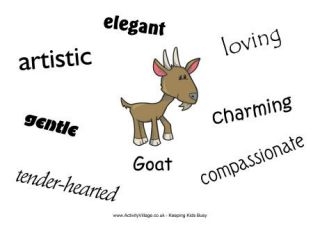


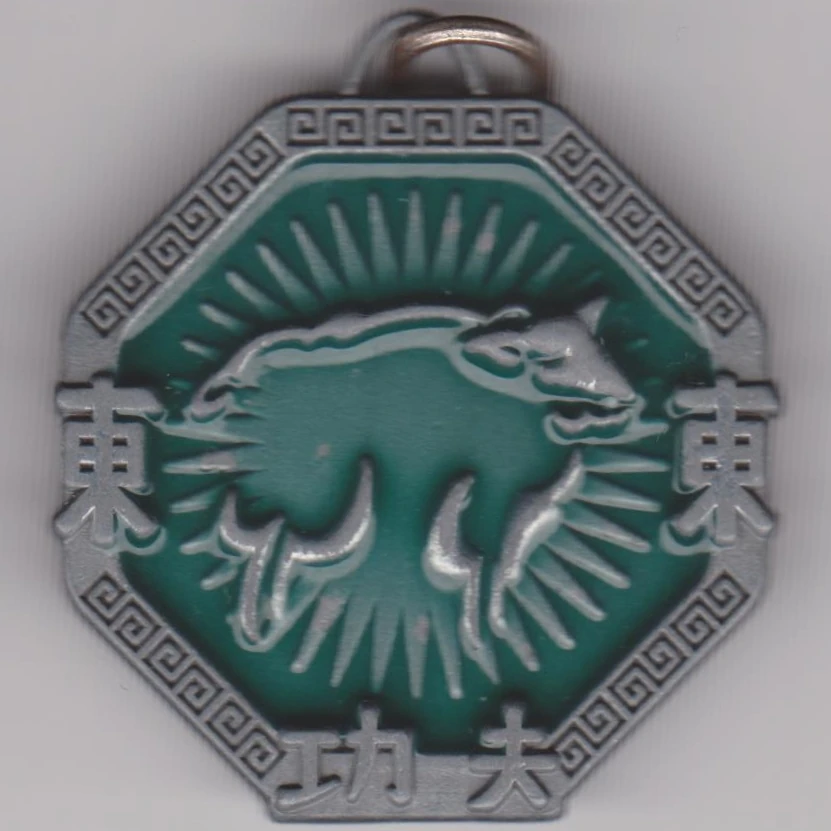

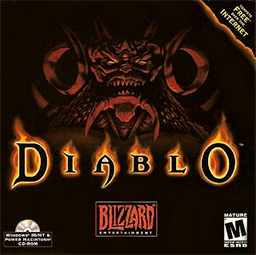


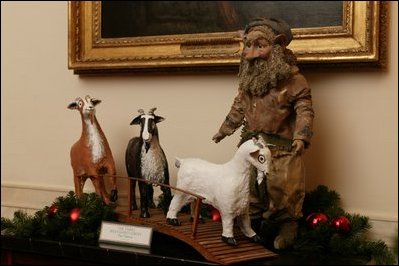

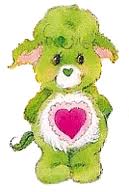
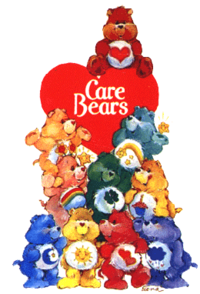
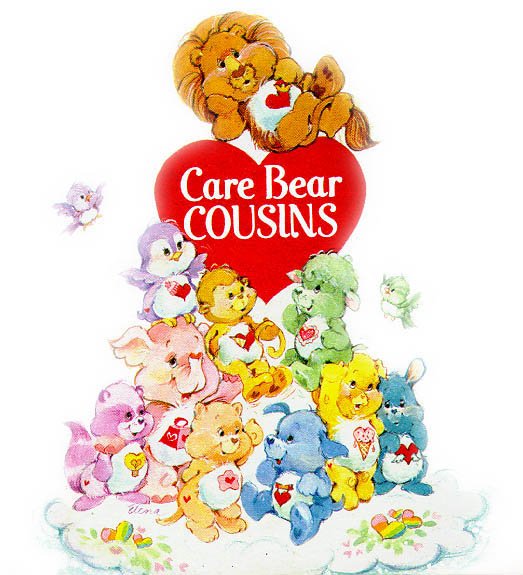
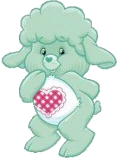
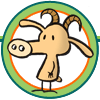








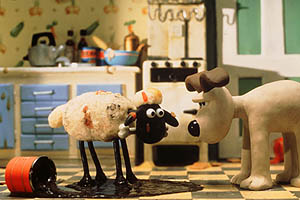



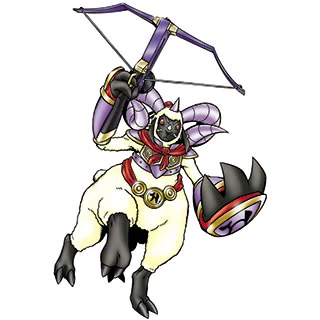




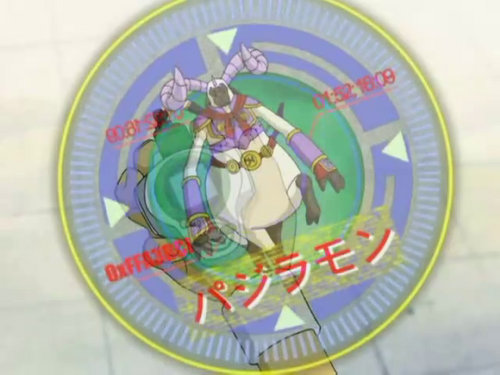
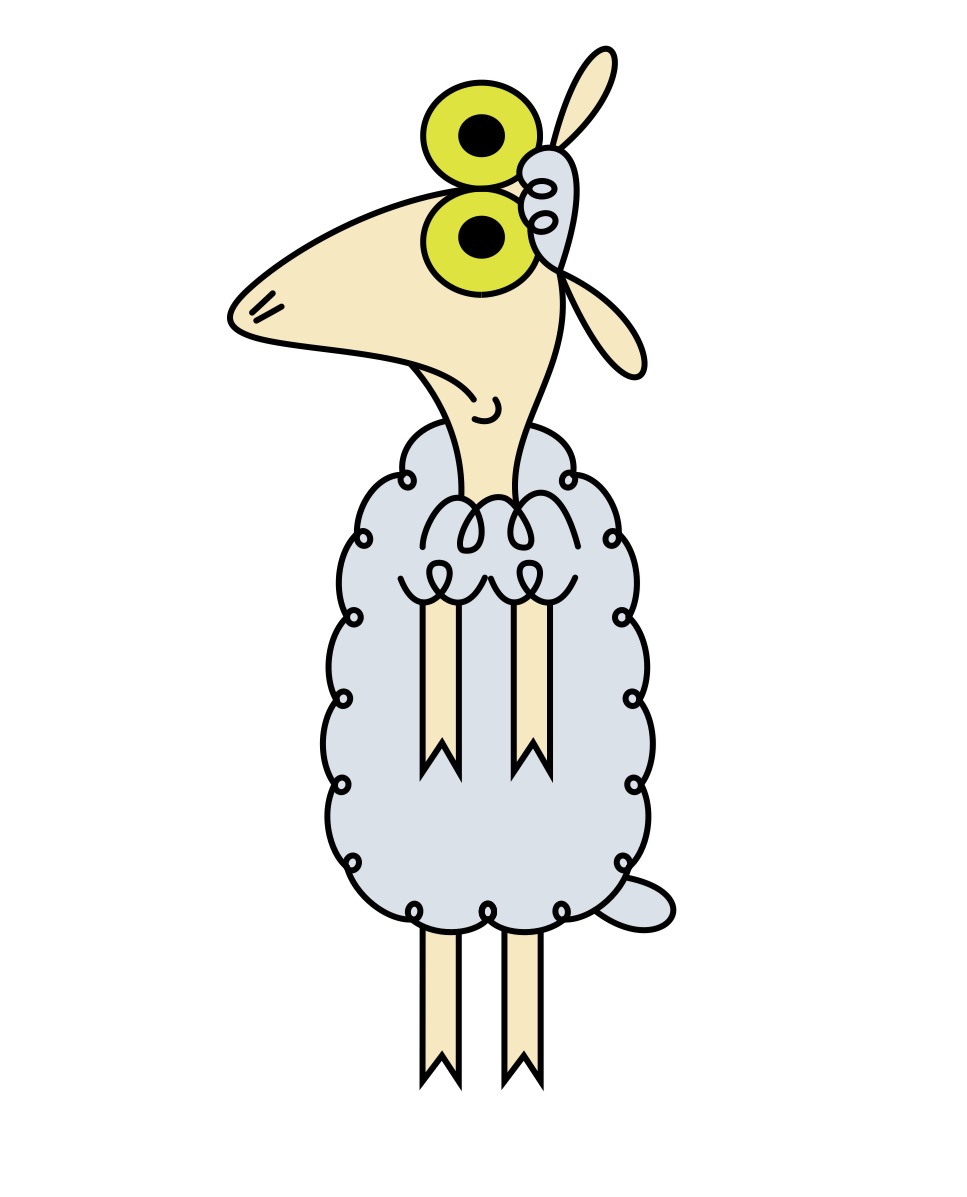


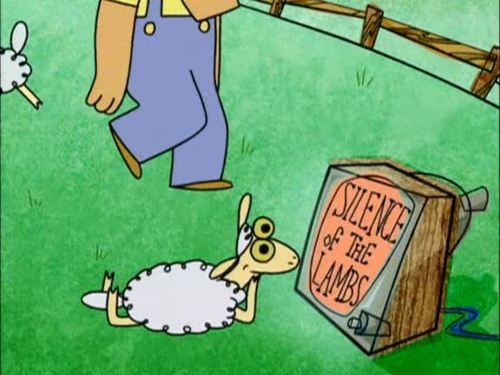
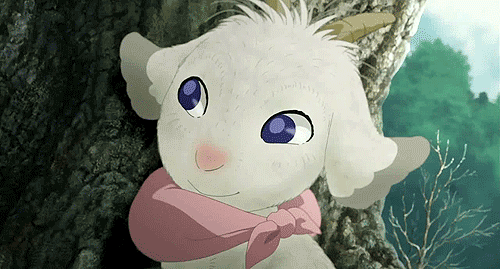
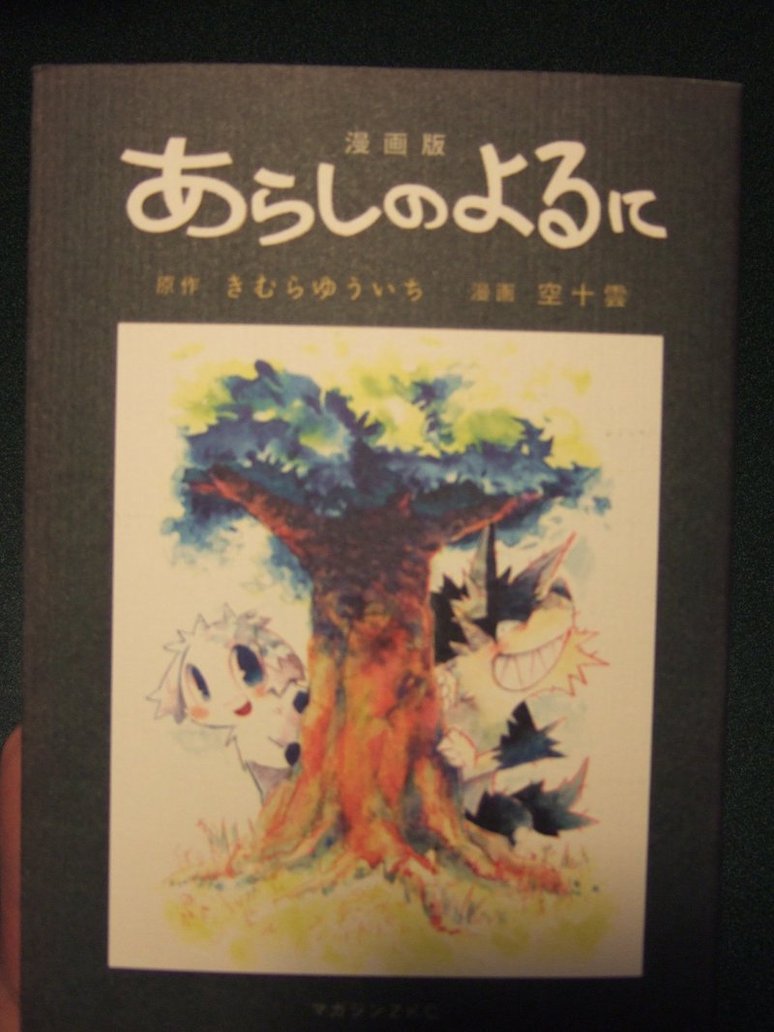
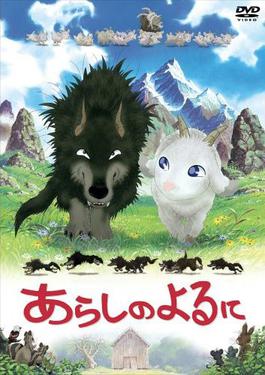
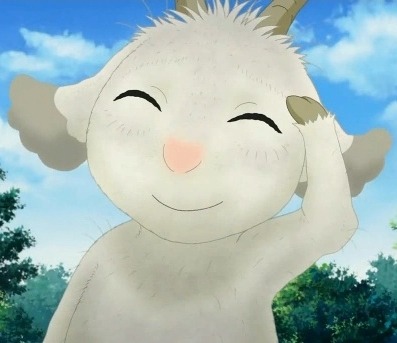
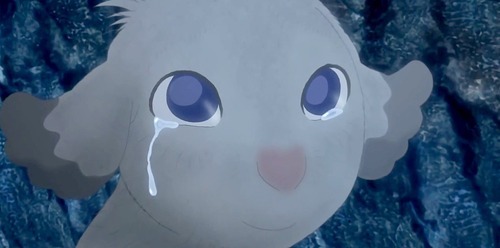
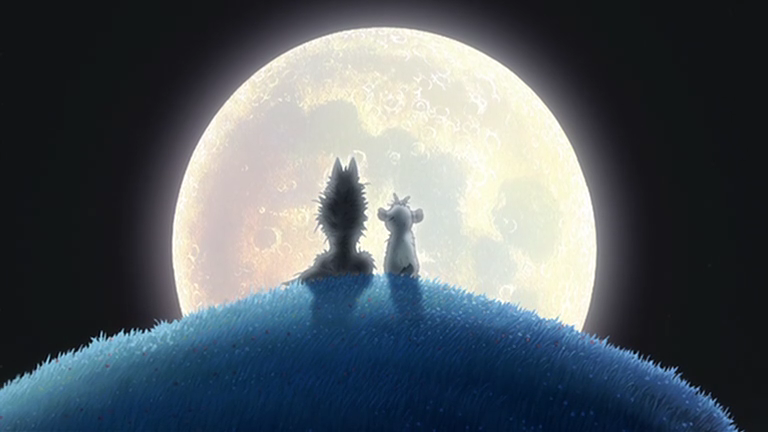








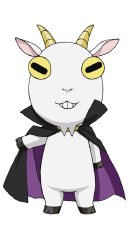

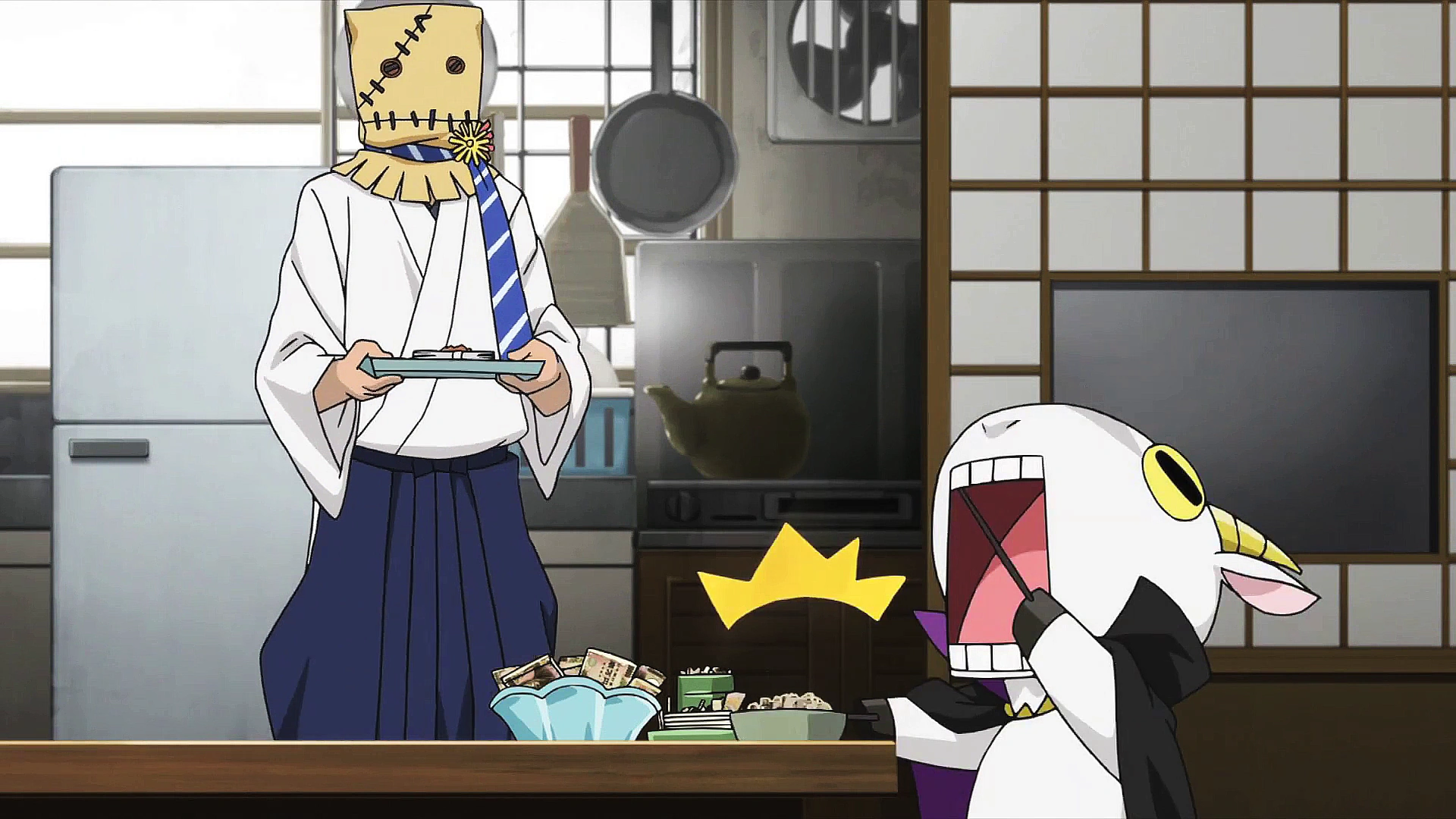

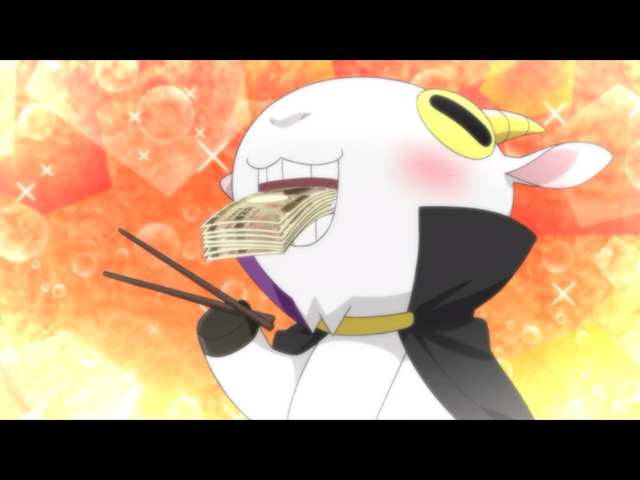





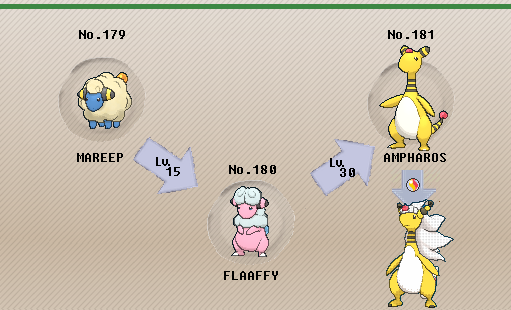






No comments:
Post a Comment